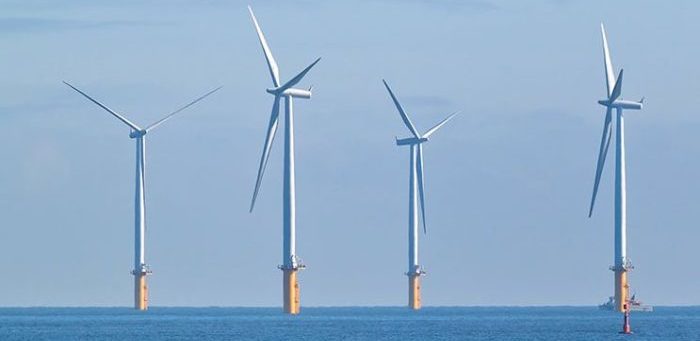Wind and solar are set to surge to almost “50 by 50” – 50% of world generation by 2050 – on the back of precipitous reductions in cost, and the advent of cheaper and cheaper batteries that will enable electricity to be stored and discharged to meet shifts in demand and supply, said Bloomberg NEF (BNEF) in its annual long-term analysis of the future of the global electricity system – New Energy Outlook (NEO) 2018. Coal shrinks to just 11% of global electricity generation by 2050.
This year’s outlook is the first to highlight the huge impact that falling battery costs will have on the electricity mix over the coming decades. BNEF predicts that lithium-ion battery prices, already down by nearly 80% per megawatt-hour since 2010, will continue to tumble as electric vehicle manufacturing builds up through the 2020s.
Seb Henbest, head of Europe, Middle East and Africa for BNEF and lead author of NEO 2018, said:
We see $548 billion being invested in battery capacity by 2050, two thirds of that at the grid level and one third installed behind-the-meter by households and businesses. The arrival of cheap battery storage will mean that it becomes increasingly possible to finesse the delivery of electricity from wind and solar, so that these technologies can help meet demand even when the wind isn’t blowing and the sun isn’t shining. The result will be renewables eating up more and more of the existing market for coal, gas and nuclear.
In addition, NEO 2018 sees $11.5 trillion being invested globally in new power generation capacity between 2018 and 2050, with:
–> $8.4 trillion of that going to wind and solar and
–> a further $1.5 trillion to other zero-carbon technologies, such as hydro and nuclear.
This investment will produce a 17-fold increase in solar photovoltaic capacity worldwide, and a sixfold increase in wind power capacity.
- The levelized cost of electricity, or LCOE, from new PV plants is forecast to fall a further 71% by 2050, while that for onshore wind drops by a further 58%.
- These two technologies have already seen LCOE reductions of 77% and 41% respectively between 2009 and 2018.
Elena Giannakopoulou, head of energy economics at BNEF, said:
Coal emerges as the biggest loser in the long run. Beaten on cost by wind and PV for bulk electricity generation, and batteries and gas for flexibility, the future electricity system will reorganize around cheap renewables – coal gets squeezed out.
The role of gas in the generation mix will evolve, with gas-fired power stations increasingly built and used to provide back-up for renewables rather than to produce so-called base-load, or round-the-clock, electricity.
–> BNEF sees $1.3 trillion being invested in new capacity to 2050, nearly half of it in ‘gas peaker’ plants rather than combined-cycle turbines
–> Gas-fired generation is seen rising 15% between 2017 and 2050, although its share of global electricity declines from 21% to 15%.
Fuel burn trends globally are forecast to be dire in the long run for the coal industry, but moderately encouraging for the gas extraction sector. NEO 2018 sees coal burn in power stations falling 56% between 2017 and 2050, while that for gas rises 14%.
The bearish outlook for coal means that NEO 2018 offers a more upbeat projection for carbon emissions than the equivalent report a year ago. BNEF now sees global electricity sector emissions rising 2% from 2017 to a peak in 2027, and then falling 38% to 2050.
However, this would still mean electricity failing to fulfill its part of the effort to keep global CO₂ levels below 450 parts per million – the level considered by the Intergovernmental Panel on Climate Change to be consistent with limiting the rise in temperatures to less than two degrees Celsius.
Matthias Kimmel, energy economics analyst at BNEF, commented:
Even if we decommissioned all the world’s coal plants by 2035, the power sector would still be tracking above a climate-safe trajectory, burning too much unabated gas. Getting to two degrees requires a zero-carbon solution to the seasonal extremes, one that doesn’t involve unabated gas.
Among the other highlights of NEO 2018 are:
- high penetration rates for renewables in many markets (87% of total electricity supply in Europe by 2050, and 55% for the U.S., 62% for China and 75% for India)
- a shift to more ‘decentralization’ in some countries such as Australia, where by mid-century consumer PV and batteries account for 43% of all capacity.






























































